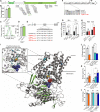FIND-IT: Accelerated trait development for a green evolution
- PMID: 36001660
- PMCID: PMC9401622
- DOI: 10.1126/sciadv.abq2266
FIND-IT: Accelerated trait development for a green evolution
Abstract
Improved agricultural and industrial production organisms are required to meet the future global food demands and minimize the effects of climate change. A new resource for crop and microbe improvement, designated FIND-IT (Fast Identification of Nucleotide variants by droplet DigITal PCR), provides ultrafast identification and isolation of predetermined, targeted genetic variants in a screening cycle of less than 10 days. Using large-scale sample pooling in combination with droplet digital PCR (ddPCR) greatly increases the size of low-mutation density and screenable variant libraries and the probability of identifying the variant of interest. The method is validated by screening variant libraries totaling 500,000 barley (Hordeum vulgare) individuals and isolating more than 125 targeted barley gene knockout lines and miRNA or promoter variants enabling functional gene analysis. FIND-IT variants are directly applicable to elite breeding pipelines and minimize time-consuming technical steps to accelerate the evolution of germplasm.
Figures



References
-
- Pimentel D., Green revolution agriculture and chemical hazards. Sci. Total Environ. 188, 86–98 (1996). - PubMed
-
- Evenson R. E., Gollin D., Assessing the impact of the green revolution, 1960 to 2000. Science 300, 758–762 (2003). - PubMed
-
- ISAAA. Global status of commercialized biotech/GM crops in 2019: biotech crops drive socio-economic development and sustainable environment in the new frontier. ISAAA Brief No. 55 (Ithaca, ISAAA, 2019).
-
- Wikipedia, Arable land (2022); https://en.wikipedia.org/wiki/Arable_land.
-
- Eisenstein M., Base edit your way to better crops. Nature 604, 790–792 (2022). - PubMed
LinkOut - more resources
Full Text Sources
Other Literature Sources
Molecular Biology Databases

